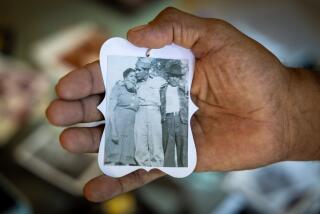Colombian City’s Walls Barred English in 1741 : In Historic Cartagena, a Latin Summit
- Share via
CARTAGENA, Colombia — After the English buccaneer Sir Francis Drake invaded Cartagena in 1586, Spain invested heavily in walls and forts to protect the strategic port. The investment paid off.
When England sent a battle fleet of 186 ships to take Cartagena in 1741, the walled city’s cannons sent the attackers fleeing.
Cartagena’s walls still stand, but the Caribbean city’s excitement these days derives mainly from the comings and goings of cruise ships, conventions and the baseball season.
Today is a little different. The presidents of Colombia, Ecuador, Peru and Venezuela are in town for a meeting under the Andean Pact, a Latin common-market plan that has never prospered.
The pact was signed 20 years ago at another summit meeting in Cartagena, adding a footnote to the city’s long and illustrious history.
Passengers on ocean liners calling at Cartagena stream through a 17th-Century convent, stopping to look at the parrots and toucans in the shady interior courtyard, filing up a long flight of coral stairs, lingering in the simple room where St. Peter Claver died in 1654.
Claver, a Jesuit missionary, called himself the “slave of slaves.” He dedicated his life to easing the misery of captive Africans bought and sold in Cartagena, one of the New World’s major slave markets.
Historians estimate that Spanish galleons brought more than a million slaves to Cartagena. Claver estimated that he baptized more than 300,000 of them. He was canonized in 1888 and later declared the patron saint of Cartagena.
According to Father Gonzalo Amaya, head of the small Jesuit community here, foreign visitors to the historic convent include groups of American blacks who are devotees of St. Peter Claver.
Some of Cartagena’s residents today are descendants of slaves who were cared for by St. Peter Claver. And some of the seven Jesuit priests who now live in the convent work with poor blacks in the Cartagena area.
Amaya said blacks here are the victims of subtle economic and social discrimination.
“In theory, there is no discrimination,” he said. “But in practice, there is very great discrimination. The majority of the blacks are poor.”
It is a time of restoration and renovation in Cartagena, which boasts one of the most extensive collections of Spanish colonial architecture in the Americas.
In colonial times, Cartagena was an important port of the Spanish Main, a key transshipment point for gold and silver from Peru and manufactured goods from Spain. The old center of the city is surrounded by massive stone ramparts studded with parapets and pocked with cannon ports.
Inside the wall, hundreds of whitewashed colonial houses with wooden balconies and carved stone portals stand shoulder-to-shoulder along narrow streets. Many of the old houses are poorly maintained.
“They are very big houses, and maintenance is difficult,” said Alvaro Anaya, chief of information for the municipal government. But as a surging tourist trade increases property values, businesses are buying and renovating increasing numbers of residential homes.
Central Cartagena’s streets, most of them barely wide enough for a single lane of traffic, are choked with cars, pedestrians and sidewalk vendors. The municipal government recently made an effort to clear vendors from some streets, raising a storm of protest.
The labor federation called the action “dictatorial and repressive.” Mayor Manuel Domingo Rojas said he will seek a negotiated solution, moving the vendors only when they have other places to sell.
Although Cartagena has its share of common crime for a city of 700,000, it has been largely free of the guerrilla warfare and killing by right-wing death squads and drug traffickers that have plagued other parts of Colombia.
According to Colombian crime lore, members of the country’s cocaine mafia come to Cartagena for rest and recreation but keep it off limits for trafficking and killing.
“I think that’s a bit of caricature,” Rojas said. He did not question the popular notion that there is drug money in Cartagena’s current real estate boom.
Outside the fortress walls, Cartagena has spread around coastal lagoons and sea inlets. High-rise hotels and apartment buildings cluster along the Bocagrande peninsula, and Rojas hopes to build a bridge to adjacent Tierra Bomba Island for further development there.
But another kind of development is giving the mayor headaches. Tugurios , shantytowns, are rapidly spreading around the city.
Officials are especially concerned about slums that have crept up the sides of La Popa , a wooded hill overlooking the city. The tugurios are destroying trees and causing serious erosion on the historic hill, which is topped by a 17th-Century monastery.
More to Read
Sign up for Essential California
The most important California stories and recommendations in your inbox every morning.
You may occasionally receive promotional content from the Los Angeles Times.










